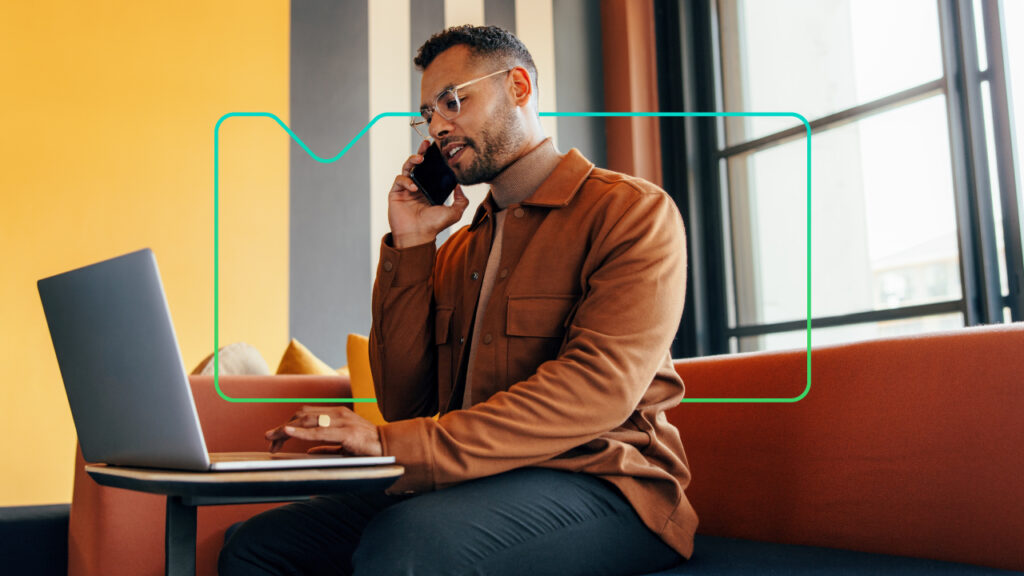7 November 2022
The future of work is e-learning — start right-skilling your workforce
Matthew O'Connor
Marketing & Communications Manager
Why right-skilling is more important than upskilling
Think of a traditional apprenticeship. A fresh-faced youngster starting out on their journey to become a master tailor, carpenter or baker. Putting in years of intensive learning to build all the know-how they will need for their career ahead.
The job market, career paths and the pace of life have all changed since those days. Both employees and employers expect a much faster takeoff in a new role. Even if an apprentice did take the time to build a career’s worth of skills before starting full duties, technology now moves so fast that there is no guarantee that the training would last a full career. Nor that the apprentice would necessarily stay in the same career long enough to make it a worthwhile use of time.
Instead, we now need to harness the same technology that drives the pace of change to provide a different type of learning. One that is tailored to the individual. One that helps that individual to continually carve out fresh niches in their skillset. One that bakes ongoing development into a regular working day.
For organisations and individuals alike, the future of work now relies heavily on e-learning.
How to start right-skilling your workforce
The term right-skilling can be contrasted with the older concept of upskilling. While it’s a relatively new term, upskilling harks back to the traditional apprenticeships we’ve mentioned. It creates a sense of a linear progression, like a video game in which you complete levels and move on to the next one.
Right-skilling is about — as its name suggests — equipping employees with the skills they need rather than an unmindful conveyor belt of what they ‘should’ learn next.
The benefits of right-skilling impact everyone involved. The individual can pursue professional interests or target the career path they want. The organisation can quickly close skills gaps (in the individual’s skill set and in the organisation as a whole) while improving staff retention, internal recruitment and leadership development.
The powerful reporting systems in platforms such as Totara Learn and Moodle Workplace make it very straightforward to track which employees have particular skills and to identify skills gaps within the organisation. Paired with the organisational knowledge of HR and L&D teams, this creates an impressive foundation for right-skilling a workforce.
Gas Networks Ireland is doing this to help it to monitor competency gaps on an organisation-wide and individual level. Its LMS shows employees which skills they need to develop to fulfil their role more effectively, as well as showing all the skills needed for other roles and specific career paths.
Transport giant Kuehne + Nagel also monitors skills gaps and encourages career progression using Totara Learn. But it has taken this a step further by using AI to identify internal recruitment candidates. It can quickly find all employees with the skills required to fulfil a vacant role.
Understanding the importance of personalisation
As we’ve alluded to already, the days of a standard, off-the-shelf training programme are over. The demands of a modern workforce require — and the development of e-learning technology allows — an approach that’s personalised to each individual.
We’ve discussed these aspects of personalisation in our consideration of moving from mandatory to meaningful learning. You can achieve more personalised learning experiences by:
- Creating personalised learning pathways that guide individuals towards personal goals, key competencies and their preferred career path
- Delivering role-specific, skills-based training that is targeted to the individual and increases engagement
- Developing learning content that gives consideration to each individual’s experience and level of knowledge of the topic
- Adopting a less is more approach, with targeted delivery of highly relevant learning instead of blanket coverage
- Building an element of flexibility and control into each learner’s pathway
- Adapting to emerging technologies, trends and skill requirements
You can also involve line managers in this process to ensure learning pathways remain relevant to the individual’s job role and function, as well as their future development plans.
Hit the ground running
We’ve said that both employers and employees expect new starters to be up and running fast. But in a world where the future of work is e-learning, learning and development needs to get started just as quickly.
This means using learning technologies not only to complete box-ticking induction tasks but to start to ingrain new starters in the culture of your organisation (and the role L&D plays within it).
You can do this by:
- Giving new starters early access to your LMS so they know what to expect on day one
- Integrating your HR system and LMS for a seamless onboarding experience
- Liaising with specific locations, subsidiaries, divisions or departments to make
- Building knowledge of an individual’s skills gaps, development targets and career priorities during the recruitment process
You can feed information learned during interviews and assessments into line managers to target priority learning for the new employee’s first few months in the role.
East Midlands Ambulance Service is among the organisations that offer early LMS access to new employees. An emergency environment heightens the need to be ready to go from your first day. A new user tour featuring a walkthrough and answers to FAQs relating to the LMS and wider organisation helps to prepare new employees for the work — and learning — ahead.
Maintaining that momentum
If you’re able to create an onboarding experience that runs along the lines of what we’ve outlined, it makes sense to sustain that energy.
Personalisation has a key part to play in that. So does social learning. In a time of increasing remote and hybrid working, it’s more important than ever to facilitate the informal interactions that are thought to account for up to 70% of all workplace learning.
Platforms such as Totara Engage are creating environments in which employees can share and absorb knowledge, best practices and resources. Connecting your team in this way helps to disperse — but also capture and formalise — some of the know-how, skills and culture that are specific to your organisation.
Elements of workflow learning, playlists and gamification help to make learning something that slots seamlessly into the working day in bitesize chunks. This helps to maintain high levels of engagement, discourages the picture of learning as an insurmountable task, and makes L&D something that is at the heart of work, rather than separate from it.
Start building the future of work within your organisation
The approaches and technologies we’ve mentioned in this article are widely available. Harness that learning technology to start right-skilling your workforce and engaging employees in personalised learning experiences at every stage of their journey with your organisation.
To discuss making e-learning something that’s at the heart of your team’s daily work to achieve the outcomes we’ve discussed, just fill out the form below and we’ll be in touch.



